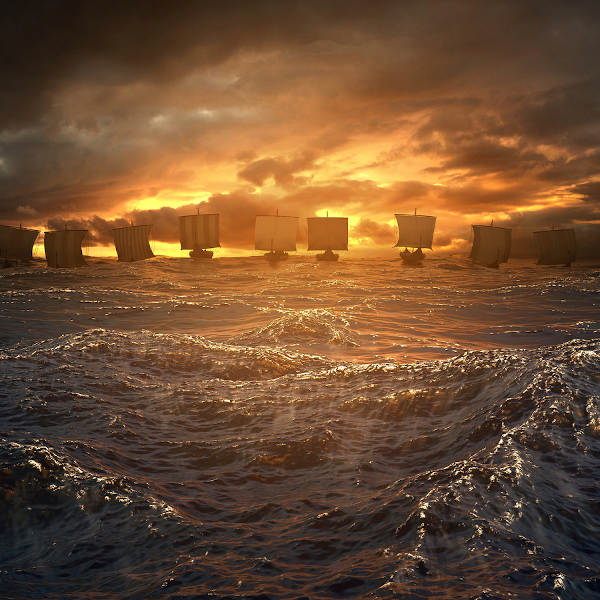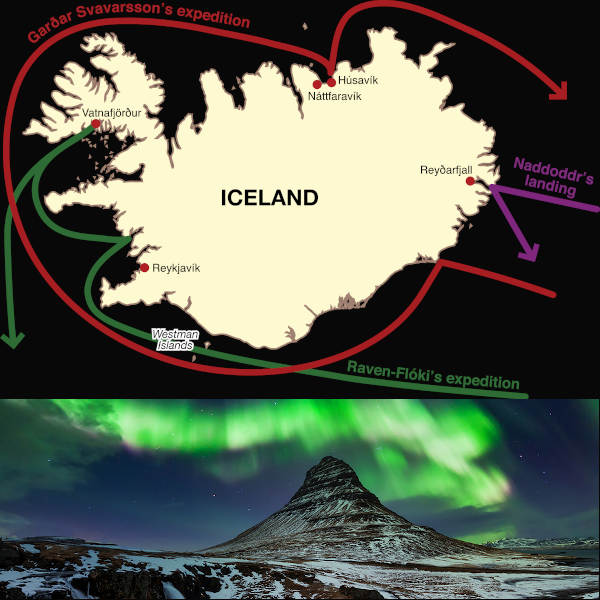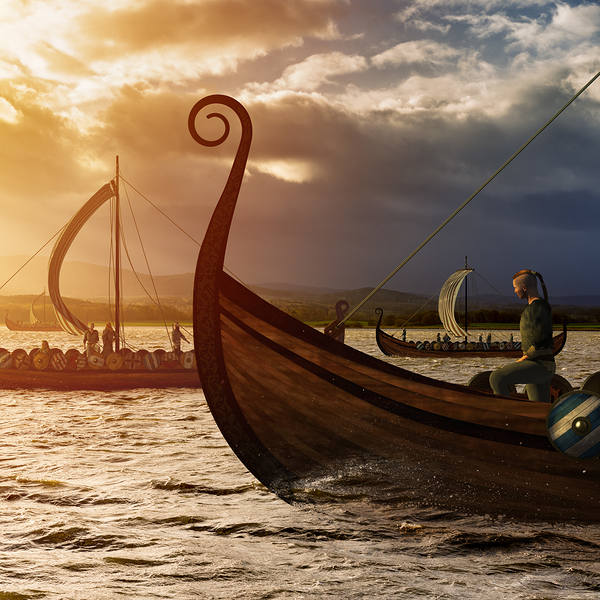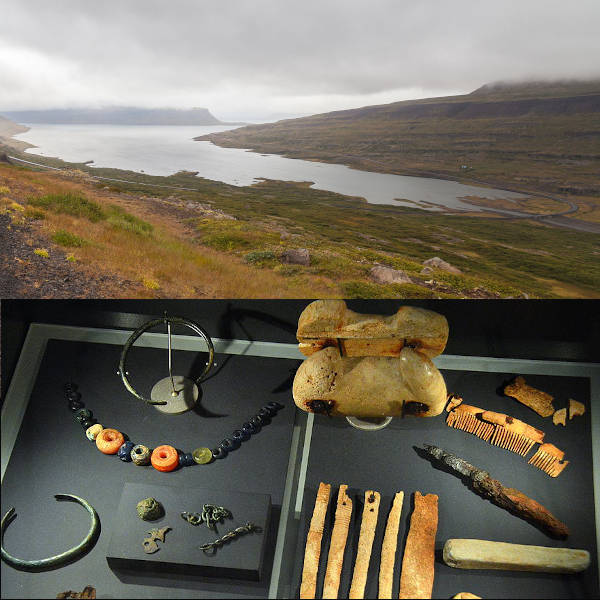DNA spotlight
Hrafna-Flóki's Vilgerðarson's Expedition

A Norseman from West Norway named Naddoðr was en-route to the Faroe Islands and got lost accidentally landing in Iceland - seeing no signs of life and the snow falling, he named this land Snæland (snow land). Around the same period, a Swedish Viking named Garðarr Svavarsson was on his way to the Hebrides islands to claim an inheritance. He had difficulty navigating the Orkney islands and ended up drifting to Iceland. Instead of making landfall, he circumnavigated Iceland to discover this piece of land was indeed an island and spent the winter in a northern bay he called Húsavík (house bay). After returning to Norway stories were told of Garðarr's adventures. Hrafna-Flóki Vilgerðarson decided he would be the first Viking to head to Iceland and settle it.

In 868 AD, Flóki dropped by the Shetland Islands on his way to the Faroe Islands where he picked up 3 ravens to help guide him. This is where he picked up the nick name Hrafna (raven) as ravens could help navigators find land. The first raven flew back to the Faroe Islands, the second raven landed on his own mast - but third raven headed due northwest and directed him striaght to Iceland. Flóki decided to settle in a protected bay called Vatnsfjörður (fjord of the lakes). Hrafna-Flóki stayed for the winter and gave the land its name when climbed Lómfell, the highest mountain in the area, and spotted a fjord full of icebergs. In Landnáma (the Book of Settlements) Flóki notes The spring proved rather cold.

Ingólfur Arnarson was involved in a blood feud in Norway and fled to Iceland to settle along with his Irish thrall females. In fact Iceland was largely colonized by Norwegian men and Gaelic females - genetically at the time Iceland was settled it was roughly 50% Gaelic - today this figure remains about 30%. Ingólfur established camp in Reykjavik (translates to Cove of Smoke) but his half brother is killed by his Irish slaves. After avenging his brother's death by chasing down the rebellious slaves to the Westman islands, he returned to his new settlement which expanded quickly to become a popular destination for rulers who wanted to consolidate power - this included visitors such as the great King Harald Fairhair, the first King of Norway.

Many of these listed samples are located in Vatnsdalur (VDP) near Flóki's first settlement Vatnsfjörður in the Westfjords of Iceland and date to this early settlement period. A wealthy Nordic Viking woman (VDP-A5) was buried with her boat and later six more individuals were buried alongside her. The others were typical Icelandic males being part Norse and part Gaelic. The gravesite included a silver Thor's hammer, jewelry, 30 beads, a knife and a near eastern coin dating from as early as 870 AD. The items seen here from this boat burial can be seen in the National Museum in Reykjavik. Not far to the south in Öndverðarnes the last sample shown DKS-A1 was found buried with a sword, a spearhead, a knife, shield-boss, bone-pin and fragments of iron. There are also numerous other early settlements on Iceland such as where the Swede Garðarr landed in Húsavík.
Sample: Viking Boat Burial Iceland
- Sample ID: VDP-A5
- Year: 925 AD
- Sex: Male
- Location: 65.5735,-24.0431
Sample: Viking Celtic Boat Burial Iceland
- Sample ID: VDP-A6
- Year: 925 AD
- Sex: Male
- Location: 65.5723,-24.0615
Sample: Viking Gaelic Boat Burial Iceland
- Sample ID: VDP-A7
- Year: 925 AD
- Sex: Male
- Location: 65.5735,-24.0431
Sample: Viking Norse Iceland
- Sample ID: DKS-A1
- Year: 935 AD
- Sex: Male
- Location: 65.3728,-14.2791



